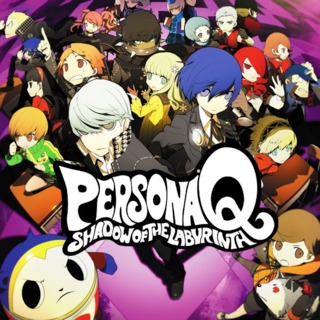From the opening sequence, the P Studio has nailed making a Persona game in appearance and aesthetic; from the rocking intro to the serene start screen, everything looks and feels like a main numbered title. So far, the art style has been delightful, as familiar characters have been made into smaller, cuter models that still retain their original attitudes and facial expressions. In the first few cutscenes, the new voice acting is slightly different, but just like Golden and Arena, Atlus has chosen perfect new talent to cover the dubs. In my review for Ultimax, I made a note of criticizing the corners that the characters from both games were written into, becoming a bit flat given the different medium. In an RPG like PQ however, everything you know and love about these characters is able to be fleshed out; plenty of pitch perfect interactions and reactions from Junpei, Aigis and new to the series Ren & Zei flavor the cut scenes and in-game dialogue like a classic Persona game (For this review, I chose the Persona 3 side for the intro, however, at some point the 3 & 4 cast will collide and make one story line). From what I’ve seen, even the dungeons and enemies are borrowed and tooled towards 3 a little more, with plenty of classic Shadows returning, albeit tuned more for this battle system.
The combat takes a new spin on both its capstone series, using the magic and physical attacks from Persona, and the party lines and Boosts from Etrian Odyssey. Boost, in particular, encourages exploiting weaknesses by giving free hits and priority to player characters, making diverse teams and setups to be able to handle any situation will make combat both layered and manageable. Binds and status ailments can be used to tilt the advantage toward the user, but are also employed by some enemies, requiring the player to defend against opponents attempting to overwhelm and take advantage. As well, unique Leader and Support abilities can prioritize your team or bring another wave of healing in emergency, as well as useful dungeon abilities that can assist in navigating the labyrinths.
The dungeon crawling and map making lifted from the Etrian Odyssey series work amazingly well, and for a series rookie, are easy enough to learn and use. Dungeon layouts are fixed, and leaving helpful notes and setting paths can help bypass traps and puzzles. Compared to the relatively fast nature of mainline Persona games, floors are much larger and denser. But, combat is engaging enough and there’s plenty on the map, from shortcuts to traps to treasure to ensure this is by no means a boring long haul. FOEs (again, borrowed from EO) act more like the Shadows of past, being visible on the map and in constant motion, but keep a set path and are extremely hard. Most will be able to kill party members in one swing, so avoid them at the beginning.
Occasionally, puzzles involving FOEs, shortcuts and plotting your path come up in each dungeon, and with each iteration, the difficulty and penalty increases. While near the beginning its possible to traipse by these snares, it is very possible to get bogged down in attempting to solve or side step the problems. This can possibly lead to extended play times, ad nauseam, and the possibility of over leveling your characters from too many random encounters. In an RPG balancing level is key to keeping a solid difficulty curve, and the end result of facing too many battles can be a negative affect on enjoying the battles later in the game.
The item shop and Velvet Room have returned as primary sources for weapons/expendables and Persona respectively, and a for-profit clinic run by Elizabeth has been set up to heal and restore SP. A good mix of familiar elements and new mechanics means you are able to balance healing, item synthesis and purchase, and Persona fusion in a similar manner to past Persona titles. Persona usage, in fact has been changed for this title, allowing all party members to carry a sub-Persona tacked on to their prime Persona. This eschews the usual battle method of relying on your main characters 12 slots of Persona switching and spreads that responsibility to the whole team. It’s been interesting and fun to try to get the perfect team of Persona matched to my party members, in order to cover weaknesses, add more elements to their repertoire, and try new moves and strategies.
To veterans of either Persona or Etrian Odyssey, this is a fine, fresh mix of two of the most recognized JRPG series, and an easy recommendation to anyone already hundreds of hours into dungeons past and fans of the classic Atlus cast. However, with such a plodding pace and the occasional difficulty imbalance, the core combination of dungeon crawling and combat can take away from the experience. As far as the incipient Year of Persona titles are regarded, Persona Q is the best example of using an established cast while introducing a new adventure to date.

